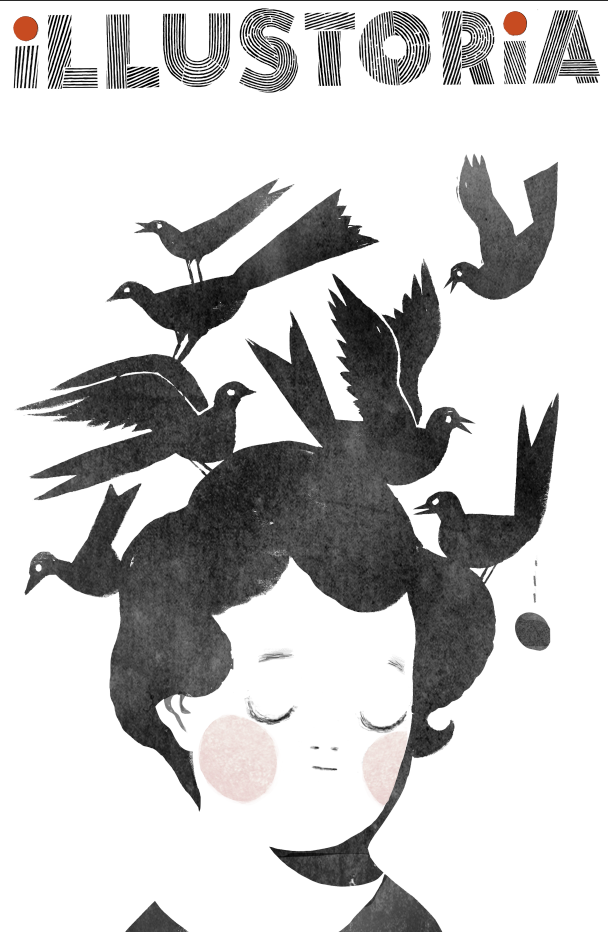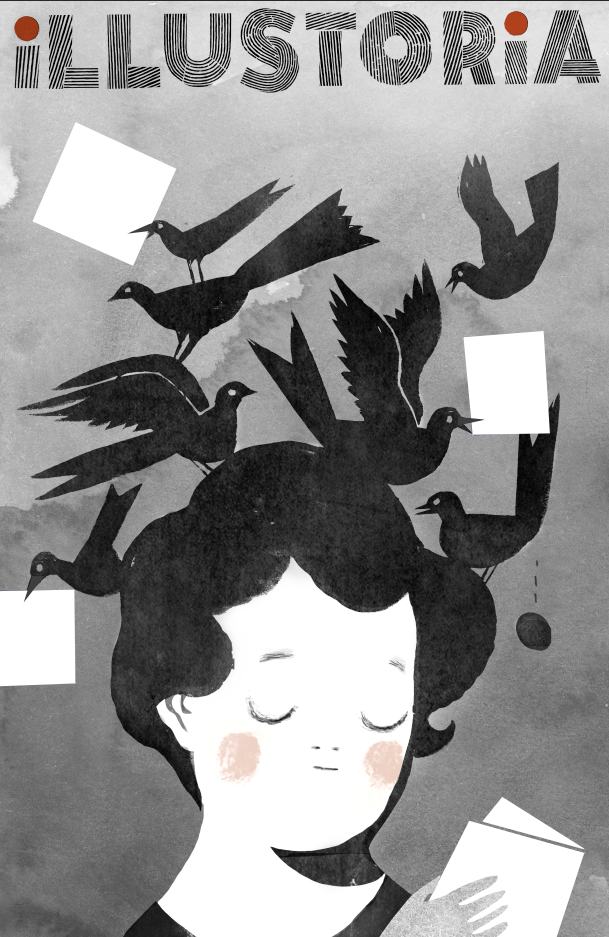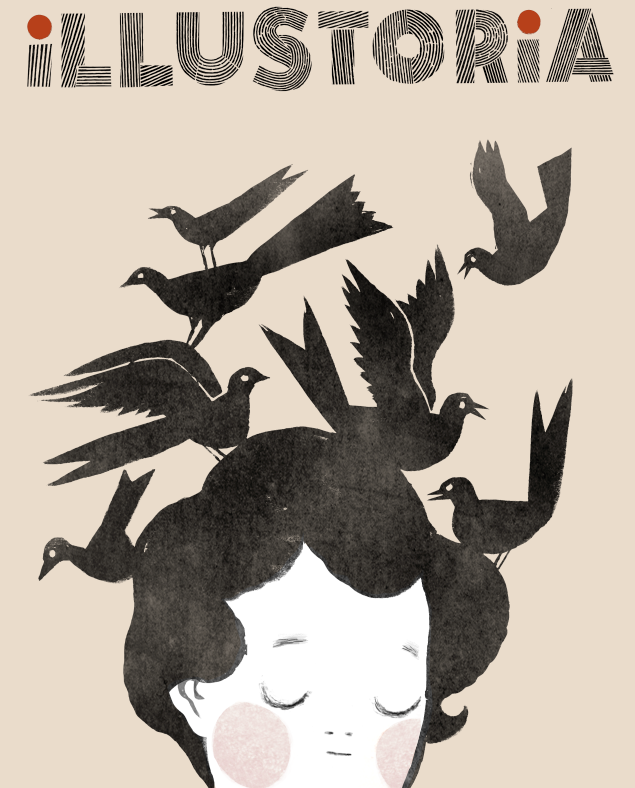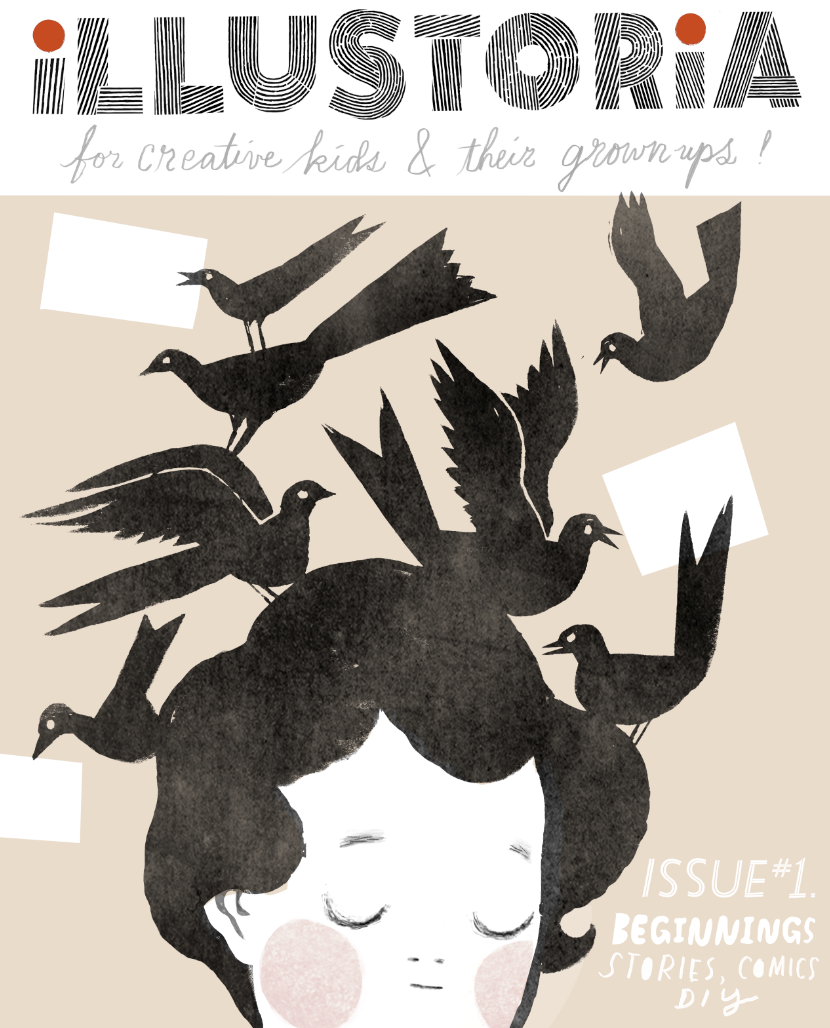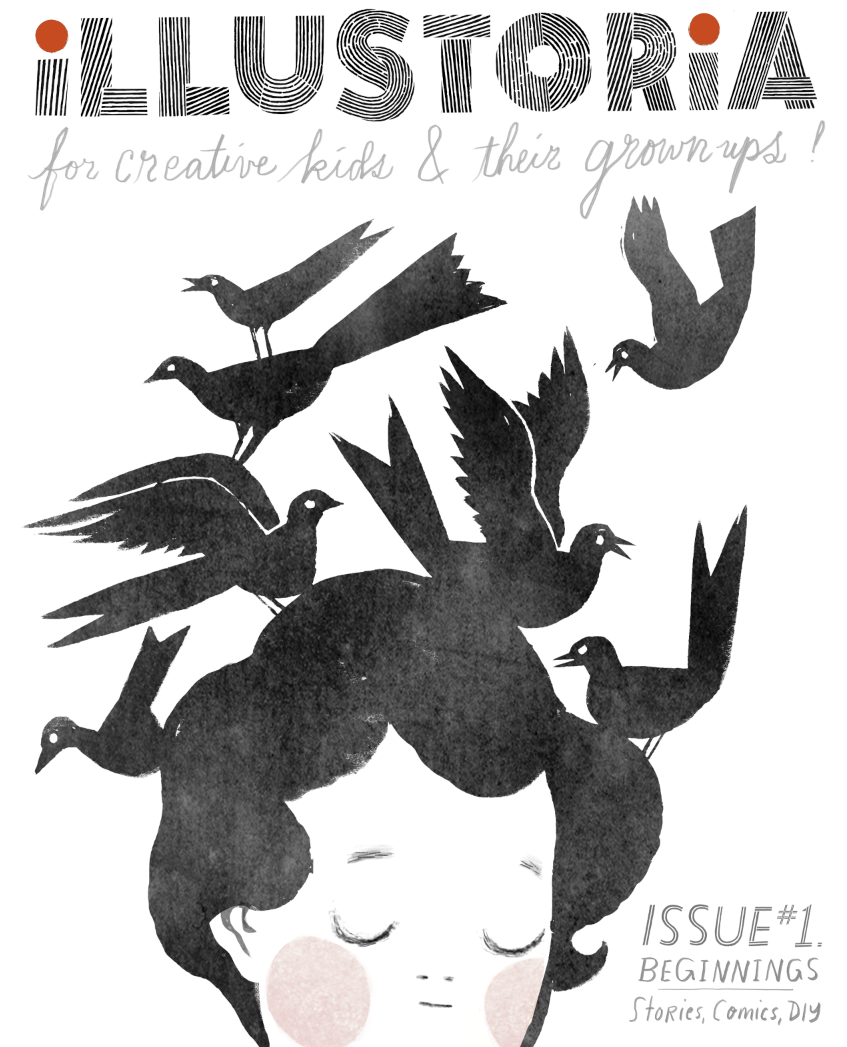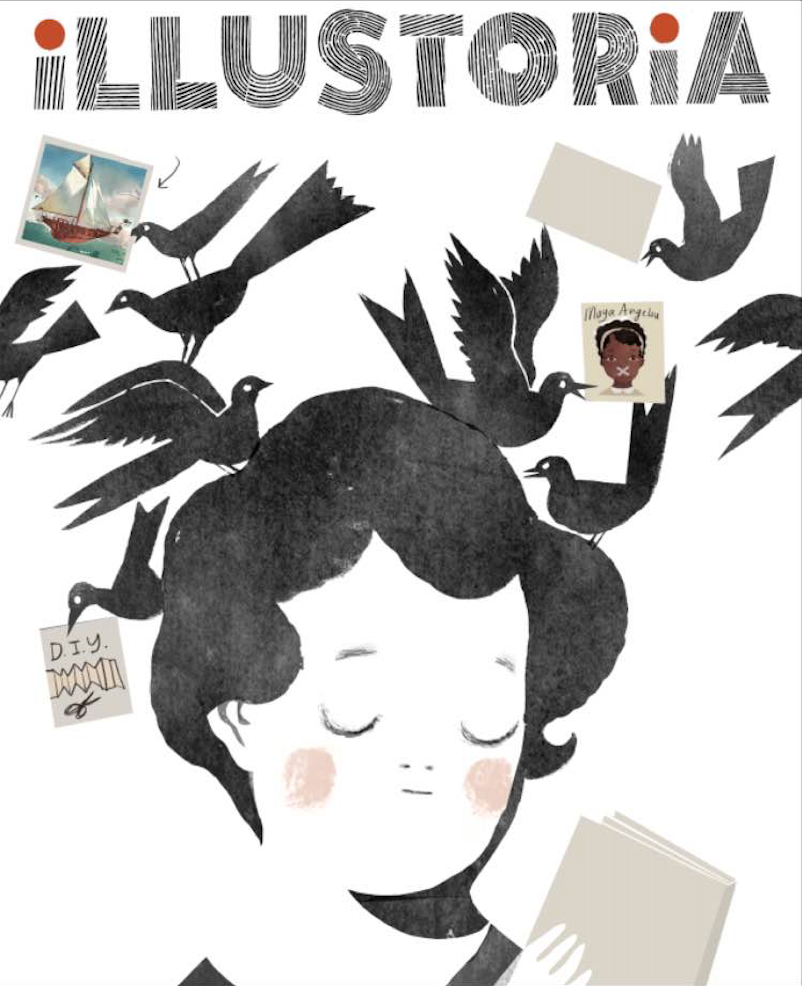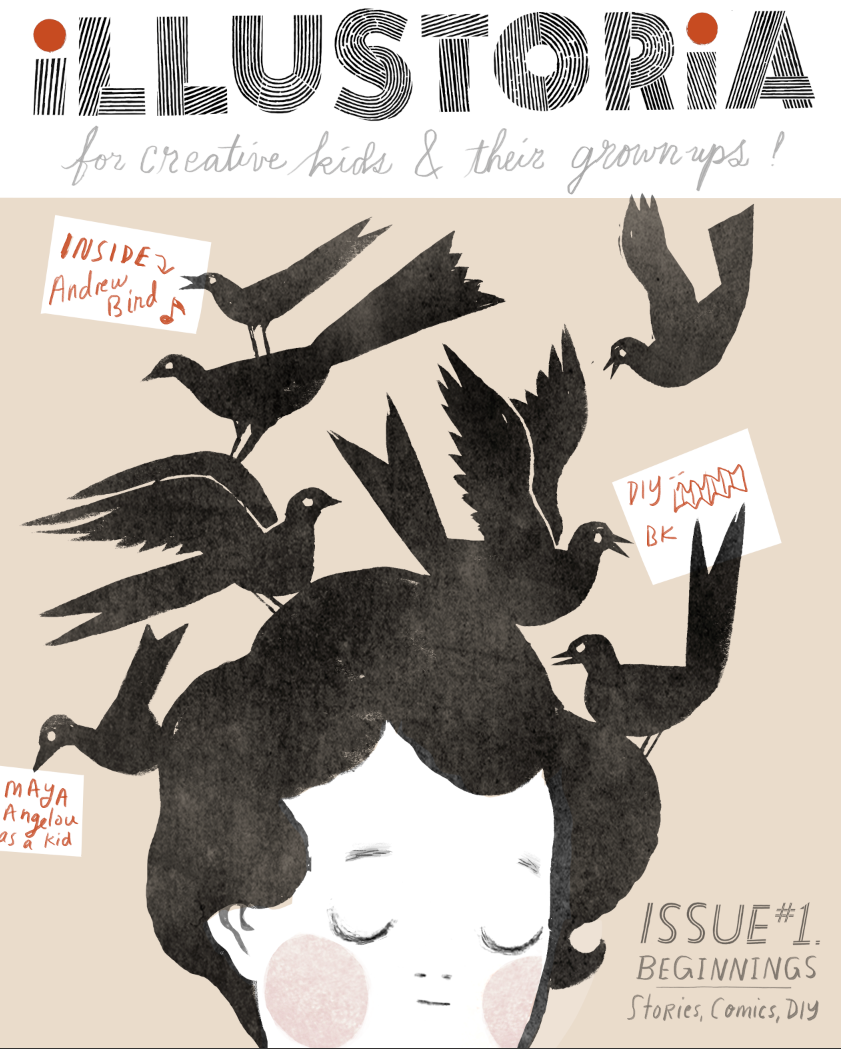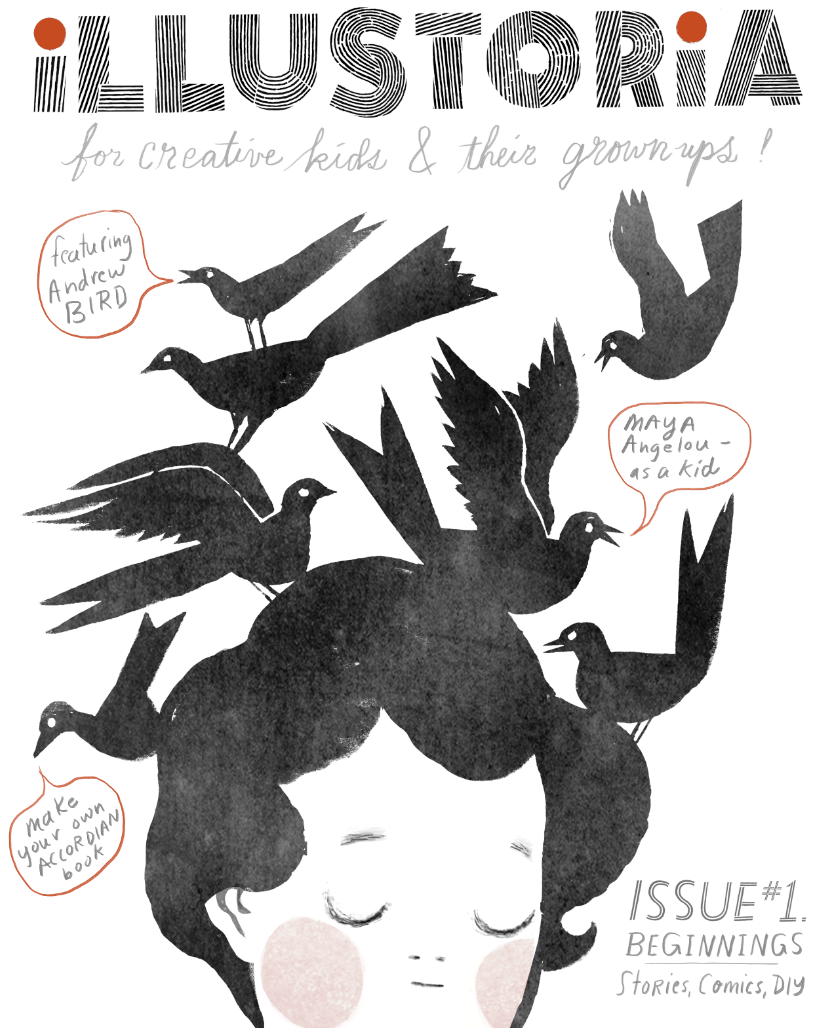Lisa Brown cover art: The OUTSIDE-IN Issue
We are so pleased to reveal our cover for issue 3, The Outside-In Issue, featuring delectably delicious, wondrously charming art by the amazing Lisa Brown!
As many of you picture book and comic fans know, Lisa is the creator of the ingenious Three Panel Book Review strips featured in The Rumpus, co-creator with Lemony Snicket of The Latke Who Couldn't Stop Screaming, author/illustrator of the hilarious Baby Be of Use board book series, and author/illustrator of her very latest, The Airport Book. Needless to say we've had a creator crush on Lisa Brown for some time....
So when a few months ago Lisa graciously took a morning out of her busy schedule as a writer, illustrator, teacher, mom, and passionate kid-lit advocate to meet with me at one of her favorite cafes in San Francisco, I was beyond excited and a little nervous. I knew through her work that she was exceedingly intelligent and bitingly witty. Being the warm and generous person that she is, Lisa immediately put me at ease. I should have known--after all, those who work in children's books generally are a kind-hearted bunch! Lisa shared with me her thoughts on why it's important to cultivate creativity in kids through that excruciating, self-conscious phase around the middle school years, the range of diverse picture books on her syllabus at CCA, the challenges that women illustrators face in the publishing industry, and she even gave me a sneak peek of her upcoming picture book. (Psst...interview with her and her elusive co-author to come in issue 4!) By the end of the meeting, she sent me along with a list of fabulous artists to contact and agreed to create cover art for an upcoming issue. I was totally blown away...and so grateful, and excited!
Now, here we are several months later with a gorgeous cover by Lisa that speaks volumes about what we at Illustoria care most about: timeless, captivating art with a unique point of view that resonates across generations; the value and delights of print publishing; the power of illustration; our ever-lasting love for visual storytelling. And how cool is this take on the swallowed-whole dilemma from Little Red Riding Hood??! Just wait until you see her back cover....
Thank you, Lisa, for your fabulous contribution to The Outside-In Issue!!
Inside you'll also find Lisa's sketchbook tips to aspiring artists. Truly the inside of issue 3 is just as delectable as the outside, with contributions by an array of lovely artists and writers whom we couldn't have pulled this off without, including: Nina Chakrabarti, Amy Novesky, Paul duCoudray, Micah Player, Willie Real, Elizabeth Haidle, Ruth Kneass, Mike Dutton, Alexis Joseph / Case for Making, Britt Browne, Claire Astrow, Yuliya Gwilym, Alexandra Rose Franco of Rito-ito, Rachel Garrison, Kristen Solecki, Clark Jackson, Martin Cendreda, Anne Pomel, Karl Dotter, and Jeremy Anderson. More sneak peeks to come so follow us on Instagram to see the latest updates.
Here's a look at #3's table of contents, and be sure to check out our Shop page to see sample spreads from this issue and to pre-order. We'll send out copies in March 2017.
I hope you enjoy this issue as much as we loved putting it together.
Lastly, thanks to Sakura of America and Case for Making for sponsoring issue 3!










